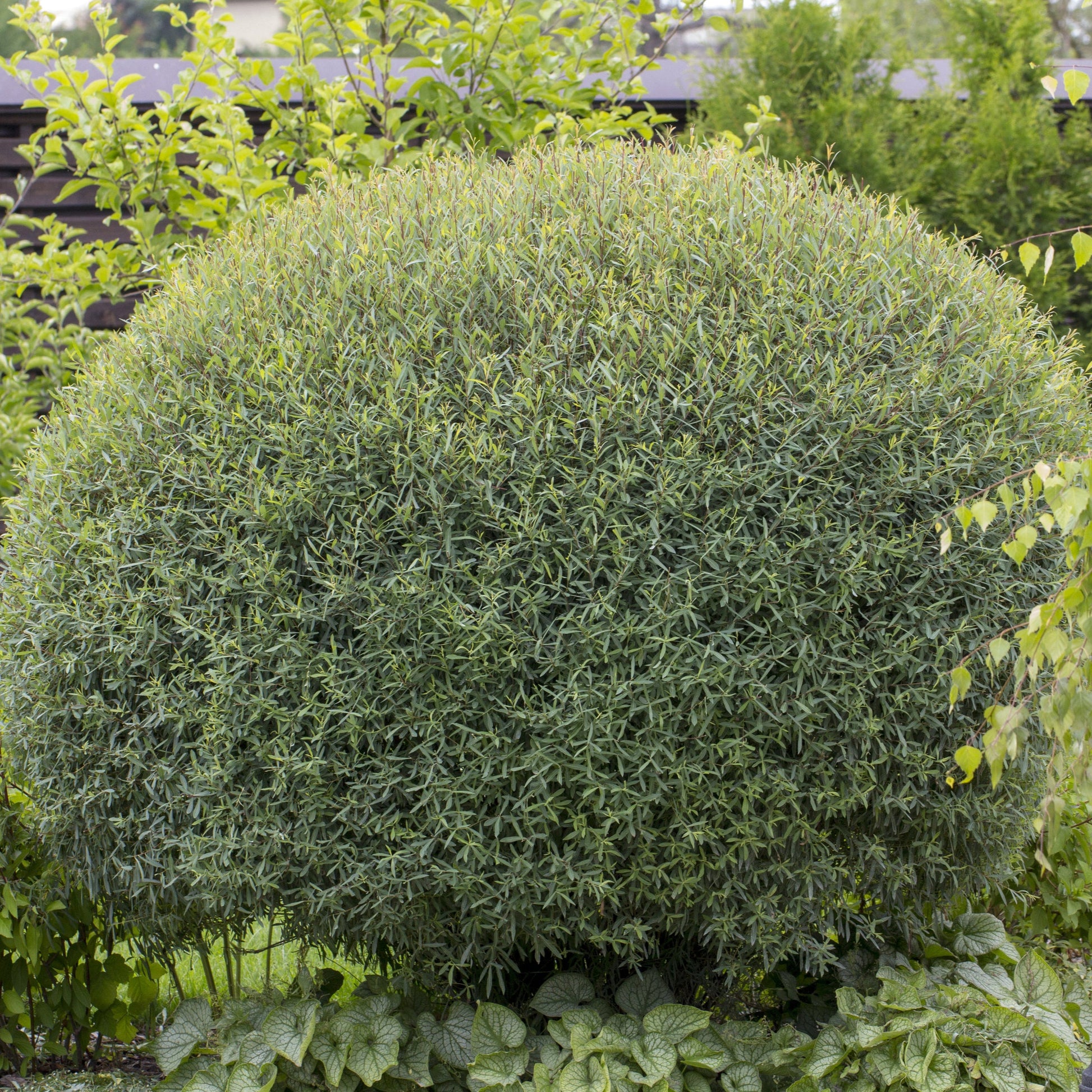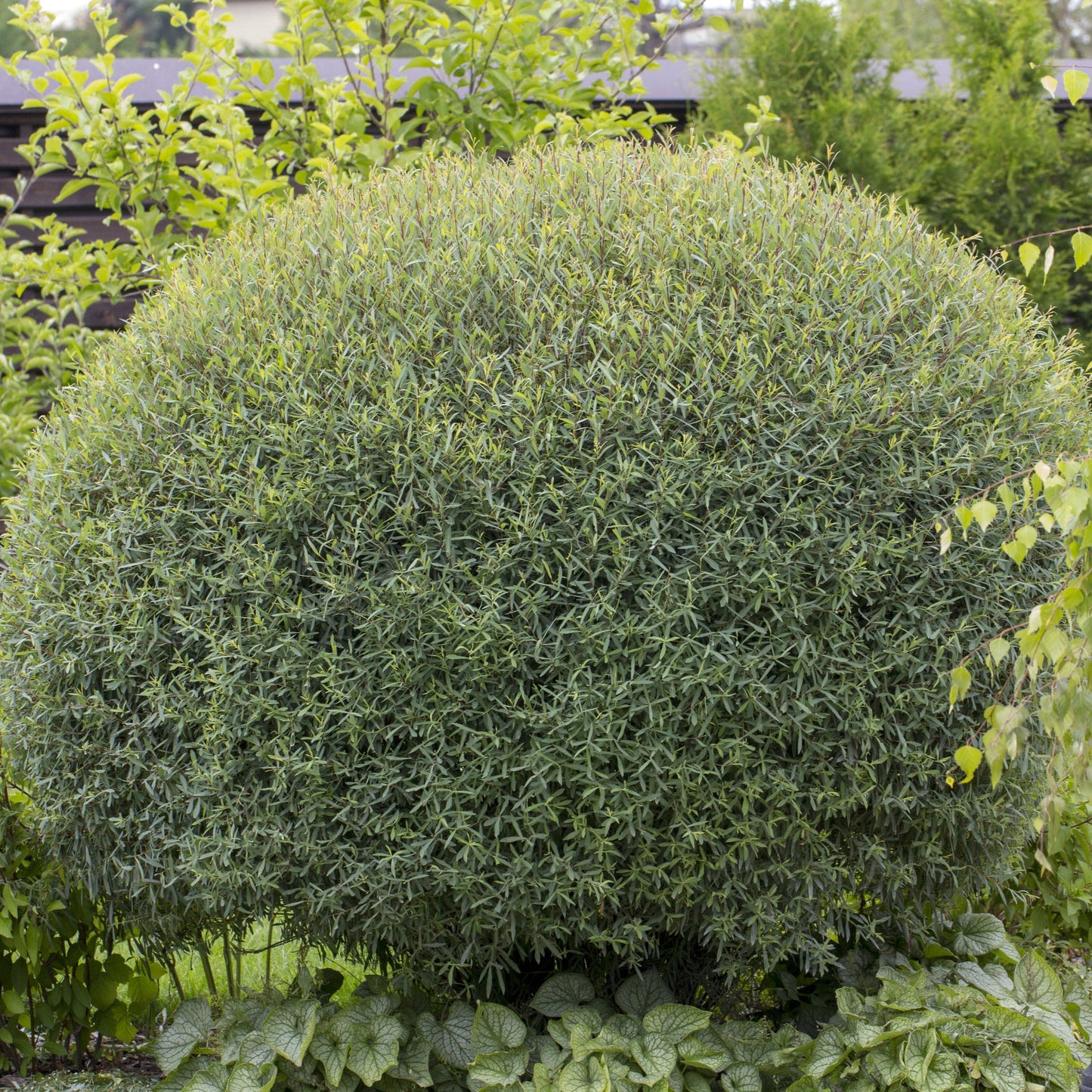Limited Quantities - Reserve Now For Fall
-
Beginner Zones 4-8

Silky Willow Shrub
Silky Willow Shrub
Couldn't load pickup availability
Salix sericea
The Silky Willow is a fast-growing, moisture-loving native shrub prized for its silver-hued leaves, elegant catkins, and exceptional ecological benefits. Often found along riverbanks, wetlands, and stream edges, this hardy and adaptable shrub is a valuable addition to rain gardens, erosion control projects, and wildlife habitats. Its silky, silvery foliage and early-season catkins provide visual interest and essential food for pollinators.
Silky Willow (Bare Root) Overview
| Attribute | Details |
|---|---|
| Variety | Rooted |
| Botanical Name | Salix sericea |
| Common Names | Silky Willow, Silver Willow |
| Mature Height | 6-12 feet |
| Mature Width | 6-10 feet |
| Growth Rate | Fast (2-4 feet per year) |
| Lifespan | 20-40 years |
| USDA Hardiness Zones | 4-8 |
| Sun Preference | Full sun to partial shade |
| Soil Type | Moist to wet, loamy, sandy, or clay soils |
| Soil pH | Slightly acidic to neutral (5.5-7.5) |
| Water Needs | High; thrives in wet or periodically flooded areas |
| Flowering Season | Spring (March-May) |
| Flower Type | Catkins (yellow-green) |
| Fall Foliage | Yellow-green |
| Wildlife Attraction | Bees, butterflies, birds, and waterfowl |
| Growth Habit | Multi-stemmed, spreading |
| Self-Pollinating? | Yes |
| Landscape Uses | Rain gardens, erosion control, riparian restoration, wetland habitats, windbreaks |
| Maintenance Level | Low |
Environmental Benefits
🌿 Erosion Control & Water Filtration – Thrives in wet conditions, stabilizing streambanks and preventing soil erosion.
🐝 Pollinator & Wildlife Magnet – Produces nectar-rich catkins that support bees, butterflies, and birds.
🌱 Carbon Sequestration & Air Purification – Helps improve air quality and capture carbon from the atmosphere.
💧 Ideal for Wetland & Riparian Areas – Absorbs excess water, making it perfect for flood-prone or rain garden areas.
Pros & Cons
| Pros | Cons |
|---|---|
| Fast-growing and quickly establishes in wet areas | Requires high moisture and does not tolerate drought well |
| Excellent for erosion control and water filtration | Can spread aggressively in favorable conditions |
| Provides habitat and food for pollinators and wildlife | Needs occasional pruning to manage size |
| Attractive silver foliage and catkins in spring | Foliage may turn yellow-green in fall rather than vibrant colors |
| Tolerates wet soils and periodic flooding | Not suitable for dry, arid landscapes |
Planting & Care Guide
- Spacing: Plant 6-10 feet apart for natural growth or closer for dense screens
- Soaking: Soak roots in water for 6-12 hours before planting
- Planting Depth: Dig a hole twice as wide as the root system, ensuring roots are level with the soil surface
- Mulching: Apply a 2-3 inch layer of mulch to retain moisture and suppress weeds
- Pruning: Prune in late winter or early spring to maintain shape and encourage healthy growth
- Fertilization: Not typically needed, but can benefit from a slow-release organic fertilizer in spring
- Watering: Keep soil consistently moist, especially in the first few years of establishment
The Silky Willow is a must-have for wetland restoration, erosion control, and wildlife-friendly landscapes. Whether planted for water filtration, bank stabilization, or attracting pollinators, this fast-growing, adaptable shrub provides beauty, ecological value, and long-term environmental benefits.
Share


